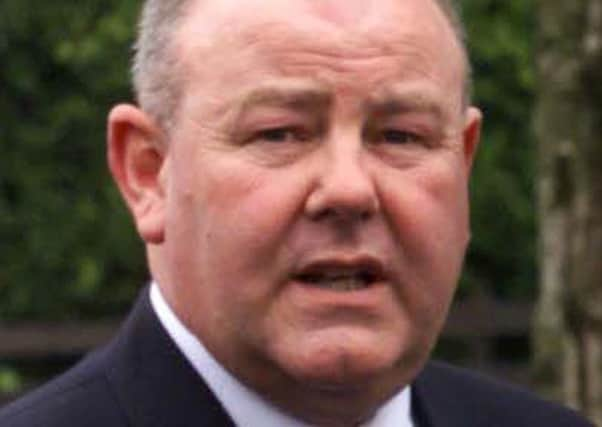Detective '˜shredded' Arkinson notes


Eric Anderson also said the order to search the schoolgirl’s sister’s home had come from the top - former chief constable Sir Hugh Annesley - after a tip-off from a “pillar of society”.
Mr Anderson was giving evidence to Belfast Coroner’s Court through Skype, because of medical issues.
Advertisement
Hide AdAdvertisement
Hide AdThe retired detective chief superintendent said he had destroyed his journals in 2011 - 10 years after he left the Royal Ulster Constabulary (RUC).
He said: “I had them destroyed by burning and putting them through a shredder.”
RUC rules dictated that journals be kept for a decade after retirement, but the force did not have any provision to store them, it was claimed.
Mr Anderson said he could no longer keep them safe.
“When I was retired I was under serious threat,” he added. “I had to move house. It was difficult to maintain keeping a safe place and it was decided, by me, that was the desirable thing.
“That was why they were destroyed.”
Advertisement
Hide AdAdvertisement
Hide AdThe inquest is examining the circumstances surrounding the disappearance of 15-year-old Arlene Arkinson from Castlederg, Co Tyrone went missing after a night out across the border in Co Donegal in August 1994.
Her body has never been found.
She was last seen with child killer Robert Howard who was acquitted of her murder in 2005 by a jury which was not told about his conviction for killing another teenager in south London several years earlier.
But Howard, 71, remained the prime suspect in the Arkinson case until his death in prison last year.
The court was told that in April 1996, Mr Anderson had directed police and army to search the home of the schoolgirl’s sister Kathleen Arkinson at Drumnabey Park in Castlederg.
Advertisement
Hide AdAdvertisement
Hide AdIt lasted for two days and involved digging up the entire garden.
The controversial decision was taken by the former RUC chief constable Sir Hugh after a tip off from a reliable source, Mr Anderson said.
“We went to see the chief constable of the day, the legal advisor of the day and also the briefed the DPP of the day,” he said.
“We would be seeking to search the house and gardens based on information which came to us from what could only be described as a pillar of society.
Advertisement
Hide AdAdvertisement
Hide Ad“He agreed we had no option but to do the search and the DPP agreed also.”
The identity of the person who provided the information that led to the search is protected by a police application for a Public Interest Immunity certificate.
Coroner Judge Brian Sherrard has yet to formally rule on whether the name can be released.
Mr Anderson told the court he could never forget the operation which he claimed was carried out in good faith.
Advertisement
Hide AdAdvertisement
Hide AdIt gained widespread media attention and Mr Anderson rejected claims he had tipped off the press.
Afterwards he claimed to have parted on good terms with Ms Arkinson adding: “I held her in very high regard. She was a lovely person and a great mother to those children.”
Despite moving on to other cases, the retired detective said he was still haunted by the Arkinson inquiry.
He said: “I never relinquished an interest in this. It still haunts me to this day.”
Advertisement
Hide AdAdvertisement
Hide AdEarlier, Mr Anderson was questioned about the apparent delay in detaining Howard who was not arrested until a month after Arlene had vanished.
When asked whether he believed vital clues had been lost, he replied: “Mr Howard had five days in which to dispose of the evidence and the body and do any other thing that he wanted to do. Lies were told.
“We were concerned in building a case against Mr Howard. It was suggested that we had a lot on Mr Howard, we had not - that came as a result of inquiries.
“The fact was we were trying to play catch up in the disappearance of a young girl. We were trying our best to get a picture of Mr Howard in order that he could be arrested, held and prosecuted.”
Advertisement
Hide AdAdvertisement
Hide AdMr Anderson further defended police action stating: “Arlene Arkinson went missing and was not reported missing for five days, not four days.
“When we started to look as part of the investigation we were absolutely snowed under with information, telephone calls, sightings and each time that happened it had to be investigated.
“We wanted to get more and more information in order to successfully arrest him and hope that by doing that we we would have a better chance of getting him to admit and telling us where the body was, which was our primary concern.
“Ask anybody involved in murder investigation - it is difficult enough over 48, possibly 72 hours but when you are running into five or six days it is impossible.”
Advertisement
Hide AdAdvertisement
Hide AdHoward was released without charge because there was insufficient evidence and a 24-hour covert surveillance operation mounted in the hope that he might do something to incriminate himself.
It proved fruitless, the court was told.
Mr Anderson said: “If you are saying did I want to charge him, the answer is yes. If you are asking could I charge him, the answer is no.
“Hindsight is a wonderful thing. The decision that was taken was the only decision open to us at that particular time.”
The case has been adjourned until next month when Mr Anderson is expected to continue giving evidence.
Meanwhile the coroner has also directed police to “redouble” their efforts regarding the disclosure of documents, particularly to locate any documents relating to the surveillance operation.
ends